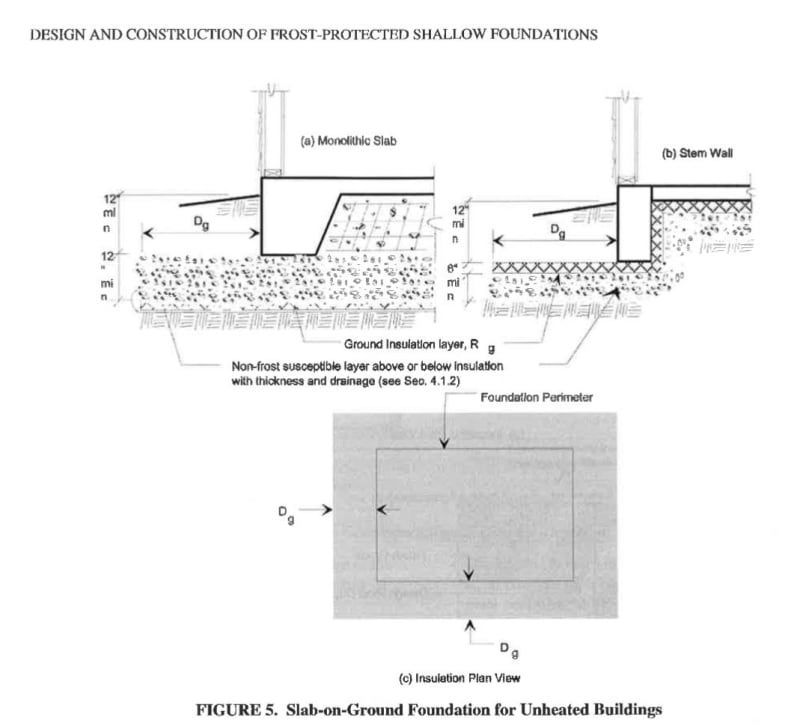For an unheated garage built on a thickened edge in Canada we typically spec insulation under the garage slab (and out a few feet horizontally all around as well). We are basing our design off of a design guide called Frost Protected Shallow Foundations put out by the National Association of Home Builders. The theory is that if you insulated under the slab, the cold air wont be able to freeze the ground below the slab due to the heat in the ground. Also, according to part 9.12.2.2 of the National Building Code of Canada, the minimum depth of foundation containing no heated space must be below the depth of frost for silt and clay unless designed for lesser depths by a registered professional.
So I am wondering if this is standard practice for these slabs? I was talking to a contractor and I was told that they have never seen insulation required under a slab as we have spec'd. The garage is just large enough that it needs engineering, so its not very big, but I don't see how frost is being dealt with without the insulation in place.
So I am wondering if this is standard practice for these slabs? I was talking to a contractor and I was told that they have never seen insulation required under a slab as we have spec'd. The garage is just large enough that it needs engineering, so its not very big, but I don't see how frost is being dealt with without the insulation in place.

